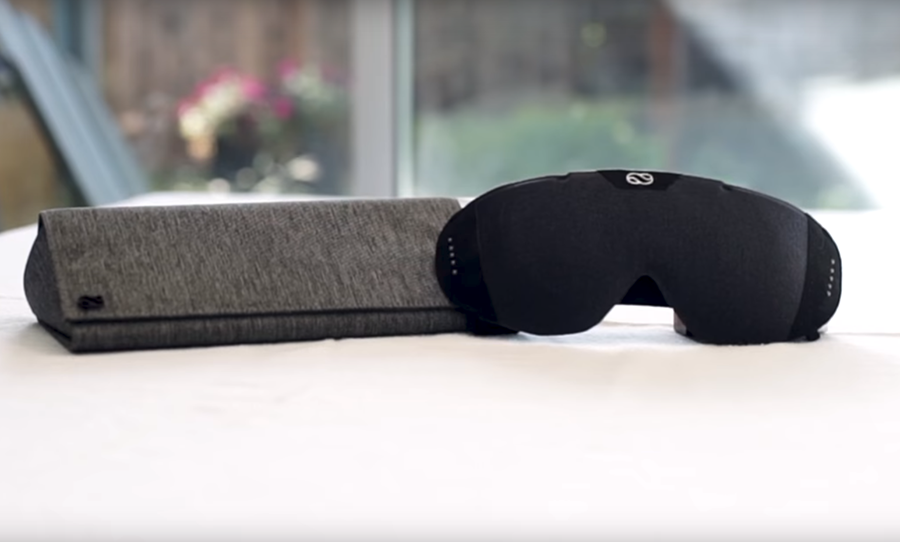Jet lag, also known as flight fatigue, or desynchronosis, is a temporary disorder that causes fatigue, headache, insomnia, and other symptoms when you travel rapidly across time zones. It is considered a circadian rhythm disorder, which results from a disruption in the body’s circadian rhythms. Other symptoms can be dizziness, confusion, loss of appetite, gastrointestinal disturbances, such as diarrhea or constipation, and mild depression. There is currently no treatment for jet lag, however doctors suggest lifestyle adjustments to minimize the symptoms.
Read more Pegasi Light Therapy Smart Sleep Glasses Helps You Sleep Better at Night
Now, a San Francisco, CA-based startup called LumosTech has developed a smart mask based on research from Stanford University that could be the closest thing yet to a fast cure for jet lag. The Lumos smart sleep mask uses light therapy while you sleep to help you adjust to a new time zone faster.
Circadian rhythm is the key to regulating our sleep and wake cycles. It is in fact, the 24-hour clock, also known as the body clock, that guides our body’s desires to be sleepy or alert. Or as Dr. Alon Avidan, director of the Sleep Disorders Center at UCLA, puts it, “It’s almost our internal thermostat telling us when to go to bed and when to wake up.”
There are special light-sensitive cells inside the retina of our eyes; these cells stimulate circadian rhythm in our brain causing us to be awake when there’s light around and feel sleepy when it’s dark. Controlling light exposure in our eyes can regulate our circadian rhythm and ease conditions like jet lag.
Bulky light therapy headsets are supposed to ease jet lag by constantly beaming blue light into your eyes, but you need to wear them at odd intervals through the day or night.

LumosTech wants to eliminate these light boxes and headsets. So, they created the Lumos Mask based on research led by Jamie Zeitzer, associate professor at the center for sleep sciences at Stanford University. Zeitzer discovered that when people are asleep, delivering short pulses of light into their eyes could change their circadian rhythm.
CNet’s Lexy Savvides used the Sleep Mask before her journey from San Francisco to Sydney. She said she didn’t use the light therapy on her 14-hour journey overnight, and instead she wore the Lumos as a regular mask to block out external light. “and even though I was stuck in the middle seat, I slept for around five hours straight,” she said.
Read more Re-Timer: Light-Therapy Glasses to Help You Get Some Sleep
“Arriving in Sydney at 6 a.m. local time, I was shocked at how much better I felt compared with previous journeys on the same flight. I was energized and stayed up until my usual bedtime, when I used the mask again. (Unlike the first night, I slept straight through and didn’t notice any flashes.) The next day I felt totally adjusted to Sydney time, with no jet lag symptoms. Did it really work, or was it a placebo?”












